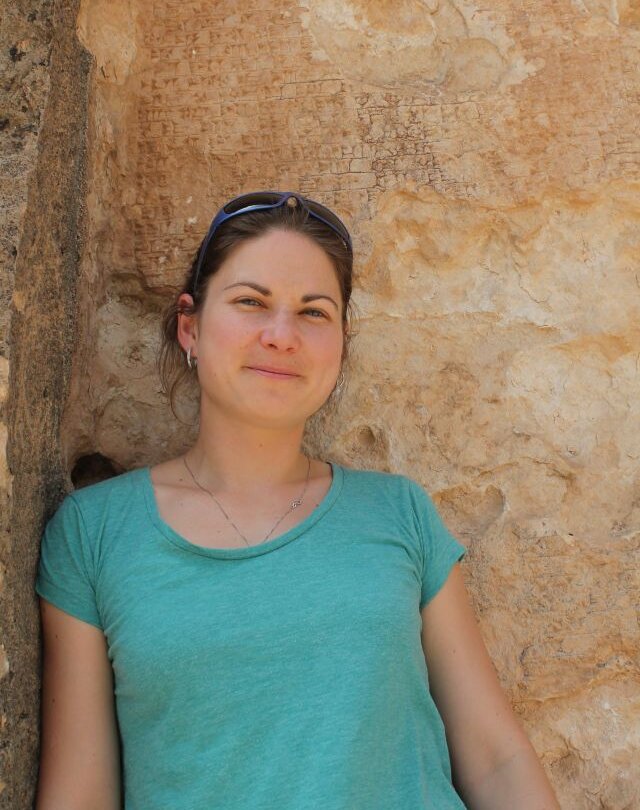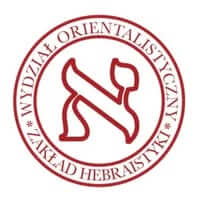Lidia Tuwalska-Napiórkowska, PhD
 e-mail: l.napiorkowska@uw.edu.pl
e-mail: l.napiorkowska@uw.edu.pl
I graduated from Hebrew Studies at the University of Warsaw in 2006. I wrote my master’s thesis on a comparative analysis of the consonant inventories of Hebrew and Aramaic under the supervision of Prof. (though at the time still Doctor) Maciej Tomal, through whom I discovered the fascinating world of Neo-Aramaic dialectology. Grants from the Rothschild Foundation and the Memorial Foundation for Jewish Studies enabled me to go to the University of Cambridge, initially as a visiting student. Soon, however, I was admitted to the Faculty of Asian and Middle Eastern Studies, first for a master’s research program (MPhil), which I completed with a thesis entitled A Comparative Study of the Neo-Aramaic Dialects of Urmi under the supervision of Prof. Geoffrey Khan in 2010.
I then pursued doctoral studies, also at the University of Cambridge and under the supervision of Geoffrey Khan, based on research documenting the grammar of a previously undescribed Neo-Aramaic dialect. This resulted in the defense of my PhD title in 2013 and the publication of A Grammar of the Christian Neo-Aramaic Dialect of Diyana-Zariwaw in 2015. Concurrently, I contributed to creating a database of Neo-Aramaic dialects, i.e. The North-Eastern Neo-Aramaic Database, where I worked on the dialects of Diyana-Zariwaw, Hawdiyan, Darbandoke, and Azran.
After obtaining my PhD, I won an Individual Postdoctoral Fellowship grant from the Endangered Languages Documentation Programme at the School of Oriental and African Languages (SOAS), University of London. As part of the programme, I conducted linguistic fieldwork on the spoken variety of Modern Hebrew, as well as on the documentation of the endangered Neo-Aramaic dialects, including in Iraqi Kurdistan. The result of the research on Neo-Aramaic is a collection of materials deposited in the Endangered Languages Archive , and on the Endangered Languages Blog, where I posted some insights on working with the Assyrian Christian communities.
In 2016, I took up a position as an Assistant Professor at my alma mater, the Faculty of Oriental Studies, where I currently teach courses in Modern Hebrew (its language, culture and grammar) and supervise undergraduate and graduate dissertations. As well as this, I hold lectures in English on Semitic linguistics and Judaism. At the University of Warsaw, I co-organized two international scientific conferences: International Conference on Neo-Aramaic Dialectology: Jews, Christians and Mandaeans 2016 and Teaching Hebrew in Europe – Challenges And Perspectives 2022 (online), I also participated in numerous conferences and seminars. In addition, I am a member of the Faculty Didactic Board and the Faculty Committee for the Quality of Teaching, as well as a supervisor of the students in our Department, providing advice and assistance with managing their course of studies and the recently founded Hebrew Scientific Association Ruach. By combining the Faculty administrative functions with the student-oriented commitments, I help to bring together the two perspectives to ensure quality communication and dialogue between the teachers and the students. In my research, I continue to work on the spoken variety of Modern Hebrew, especially within the domain of weak verbs, which I have worked on as part of a Faculty Grant for Young Scientists, and on further documentation of the Neo-Aramaic dialects. Recently, I received a grant from the IDUB New Ideas Programme, under which I am outlining a grammar of the dialect of Hawdiyan.
Outside academia, I am a busy mother, as well as a fan of natural horsemanship and analog photography. My cherished dream is to take a ride through the snows of Alaska in a husky-drawn sleigh.
Selected publications:
- “Modelling Variation in the Neo-Aramaic Dialect of Azran with Articulatory Phonology.” In Studies in the Grammar and Lexicon of Neo-Aramaic, edited by Geoffrey Khan and Paul M. Noorlander, 319-333. Cambridge: Open Book Publishers, 2020. https://doi.org/10.11647/OBP.0209.10.
- “A New Perspective on the Syriac hwayt qāṭel in a Non-Past Context.” Journal of Semitic Studies 64, no. 2 (2019), 419-431. https://doi.org/10.1093/jss/fgz022.
- “Patterns of Phonological Change Diffusion in the North-Eastern Neo-Aramaic Dialect of Azran.” In Studies in Semitic Linguistics and Manuscripts, edited by Nadia Vidro, Ronny Vollandt, Esther-Miriam Wagner and Judith Olszowy-Schlanger, 217-233. Uppsala: University of Uppsala Press, 2018. https://urn.kb.se/resolve?urn=urn:nbn:se:uu:diva-347037.
- “Mirativity and the Near Deixis Copula dule in Neo-Aramaic.” Journal of Pragmatics 98 (2016): 1-17. https://doi.org/10.1016/j.pragma.2016.04.007.
- A Grammar of the Christian Neo-Aramaic Dialect of Diyana-Zariwaw (Studies in Semitic Linguistics 81). Leiden: Brill, 2015. Zobacz więcej na stronie wydawnictwa.
- [with Khan, Geoffrey, eds.] Neo-Aramaic in Its Linguistic Context (Gorgias Neo-Aramaic Studies 14). Piscataway, NJ: Gorgias Press, 2015. Zobacz więcej na stronie wydawnictwa.
- “Diachronic Perspective on the Status of Emphasis in Diyana-Zariwaw.” In Neo-Aramaic in Its Linguistic Setting (Gorgias Neo-Aramaic Studies 14), edited by Geoffrey Khan and Lidia Napiórkowska, 189–216. Piscataway, NJ: Gorgias Press, 2015. https://doi.org/10.31826/9781463236489-009.
- “The Two Neo-Aramaic Dialects of Urmi in the Light of Language Contact.” Rocznik Orientalistyczny LXVI, no. 2 (2013): 86-101. https://journals.pan.pl/dlibra/publication/95320/edition/82213/content/the-two-neo-aramaic-dialects-from-urmi-in-the-light-of-language-contact-napiorkowska-lidia?language=pl.
Book reviews:
- “Waltisberg, Michael: Syntax des Ṭuroyo. Wiesbaden: Harrassowitz 2016.” Orientalistische Literaturzeitung 113: no. 6, (2019). https://doi.org/10.1515/olzg-2018-0156.
- “Sina Tezel, Arabic Borrowings in Şūrayt/Ţūrōyo within the Framework of Phonological Correspondences. In Comparison with other Semitic Languages.” Journal of Semitic Studies 64, no. 1, (2019), 308-309. https://doi.org/10.1093/jss/fgy051.
Language corpora:
- „The Documentation of the Neo-Aramaic Dialect Cluster of Gargarnaye”, 2013-2015 ELDP Project. http://elar.soas.ac.uk/deposit/0291.
- „The North-Eastern Neo-Aramaic Database Project”, University of Cambridge. https://nena.ames.cam.ac.uk/.
Dissemination:
- “Poprute reliefy Międzyrzecza.” Tygodnik Powszechny, 20.09.2015. https://www.tygodnikpowszechny.pl/poprute-reliefy-miedzyrzecza-30207.
- „The Documentation of Sureth”, Syriac Writers Union, Iraq 2014 [in Neo-Aramaic].
In preparation:
- “The Folk Tale of Rustam in Neo-Aramaic: The Art of Storytelling.” The Artistic Traditions of Non-European Cultures, ed. by Hanna Rubinkowska-Anioł.
- “Relating Morphological and Sociolinguistic Variety in Modern Hebrew to Neo-Aramaic.”
- Wiedza o języku hebrajskim.
- The North-Eastern Neo-Aramaic Dialects around Diyana.
- “The emergence of a marginal phoneme as a harmonic and contact-assisted phenomenon: the case of the Neo-Aramaic [ø].”
